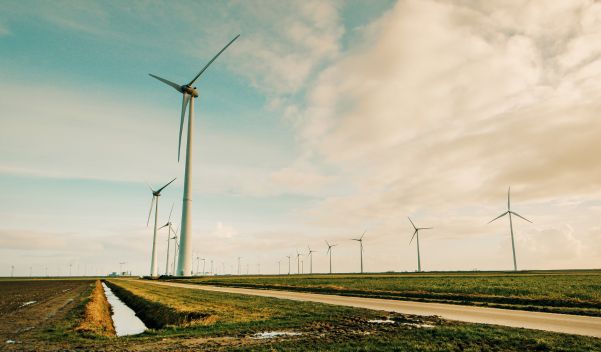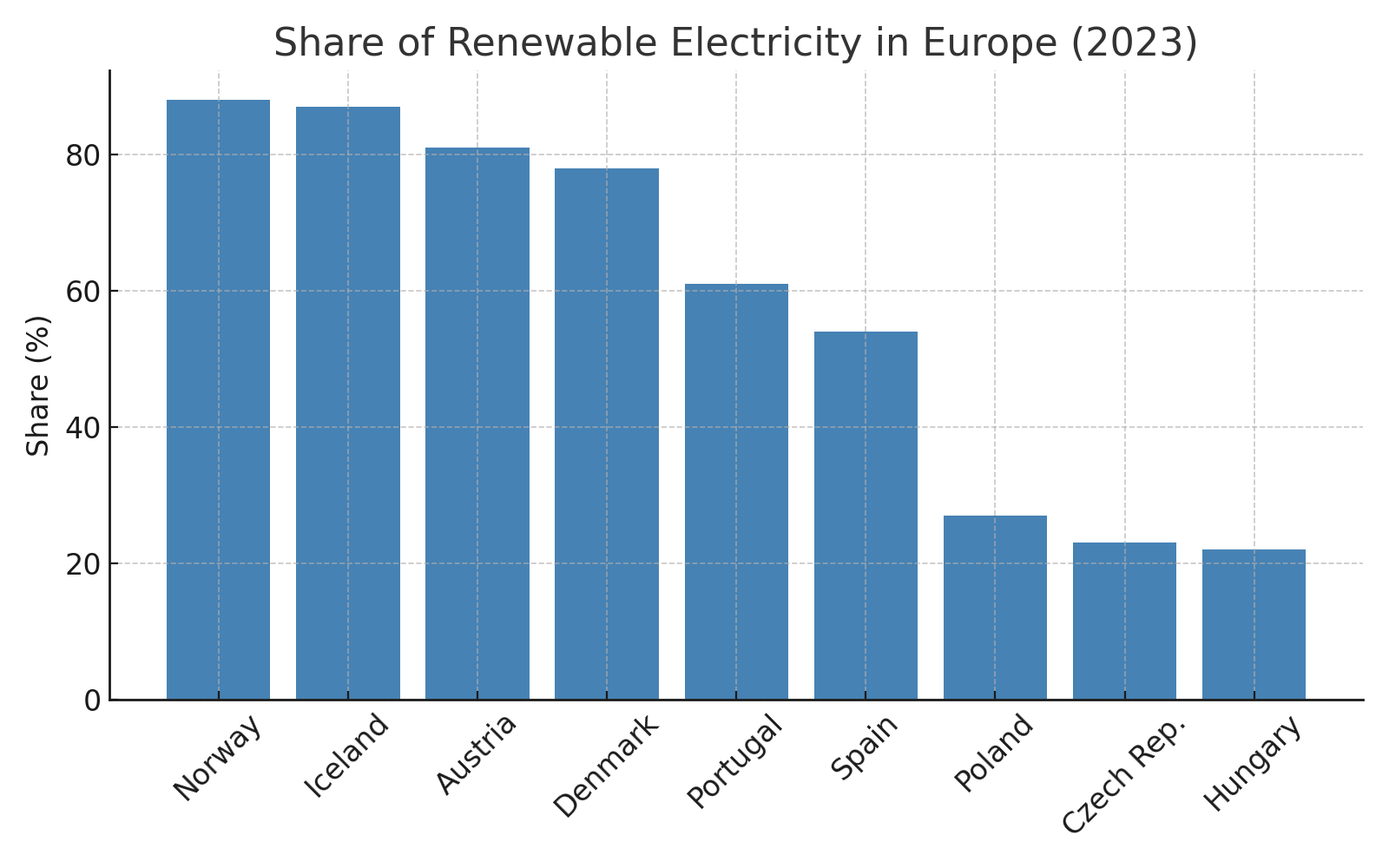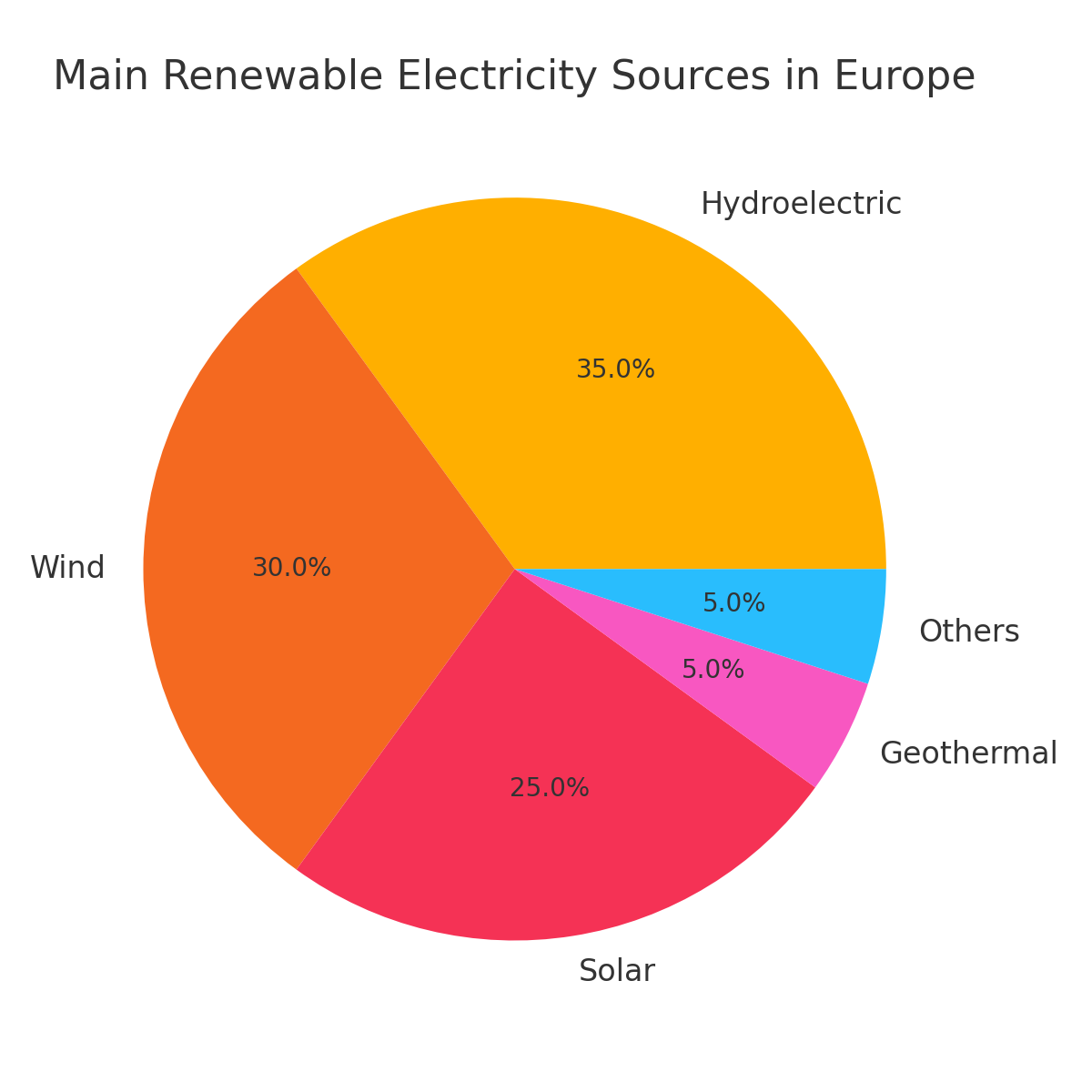Europe consolidates its position in the global energy transition: check out the leading countries

Europe has established itself as one of the most advanced regions in the energy transition, and the share of renewable energy sources in its electricity mix is growing rapidly. Recent data indicate that several countries have already exceeded the 50% mark for clean electricity generation, reinforcing Europe's role in decarbonisation and energy security.
Growth of renewable energy in Europe
According to a survey by Visual Capitalist (2025), the European average for electricity from renewable sources reached around 44% in 2023, surpassing continents such as North America and Asia. This progress is in line with the European Union's climate targets and demonstrates the efforts of countries to reduce their dependence on fossil fuels.
Among the leaders are:
- Norway – 88% renewable electricity, predominantly based on hydroelectric power.
- Iceland – 87%, with heavy use of geothermal energy.
- Austria – 81%, notable for its Alpine hydroelectric plants.
- Denmark – 78%, a world leader in wind energy.

On the other hand, countries such as Hungary (22%), the Czech Republic (23%), and Poland (27%) still have low renewable energy participation due to their high dependence on coal and natural gas.
Most used sources
The main sources of energy in Europe include:
- Hydroelectric, predominant in mountainous countries with abundant water resources
- Wind, rapidly expanding in the north of the continent and in coastal regions.
- Solar photovoltaic, growing rapidly in the south, especially in the Iberian Peninsula
- Geothermal, mainly exploited in Iceland and parts of Italy.

These diversified sources ensure greater stability for the European electricity system, reducing vulnerability to fluctuations in international fossil fuel markets.
Spain and Portugal: leaders in solar
In the Iberian Peninsula, solar energy plays a leading role. In 2023, Spain recorded 54% renewable generation, with solar, wind, and hydro power standing out. Portugal reached 61%, driven mainly by wind power. These figures strengthen energy security and position the region as a strategic destination for investment in the sector.
Challenges: storage, networks, and flexibility
To transform monthly records into structural dominance, three levers are essential: BESS, smart grids, and active demand management. Analysts interviewed by Euronews point to batteries and flexibility as ‘the next big opportunity’ to extend the use of renewable energy to mornings and evenings — windows in which fossil fuels still set prices. Cross-border interconnections and modernisation of distribution networks are equally critical to transporting generation and accommodating local solar energy peaks in Europe.
At the same time, market rules that value capacity services, demand response, and aggregators tend to accelerate the replacement of thermal power plants, while improving the reliability of the electricity system.
How to capture value from solar energy in Europe
Society supports change: almost 9 out of 10 Europeans are in favour of increasing renewables, according to the European Commission, which is driving solar roofs, energy communities, and corporate PPAs. Community energy initiatives with discounts, co-ownership, and local jobs receive consistent support and increase the success rate of projects — especially when they engage residents from the outset and share financial gains.
For companies and utilities, long-term supply agreements, integration with batteries, and portfolio management by time slot become competitive advantages. For governments, accelerating digital licensing, stable auctions, and network upgrades maintains the virtuous cycle of investment in solar energy in Europe, consolidating climate leadership and reducing cost volatility for consumers.
Europe is at the forefront, but with challenging goals
Europe is at the forefront of the energy transition, with robust examples of renewable adoption and technological advances. However, challenges such as large-scale storage and modern networks require coordinated action between governments, businesses, and civil society.
If you want to apply artificial intelligence to energy asset management and ensure greater efficiency and predictability in operations, learn more about the Delfos platform now.
Click here to request a free demo, talk to our experts, and discover how to leverage your plant's performance using our technology and market experience.
Book a meeting
Let's connect and forge new partnerships
Custom Renewable Energy Solutions
Contact us today and join global operators who recovered up to 10% revenue and cut downtime by 18%


